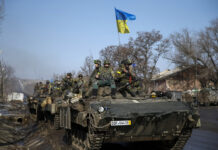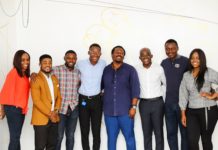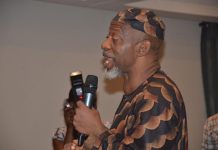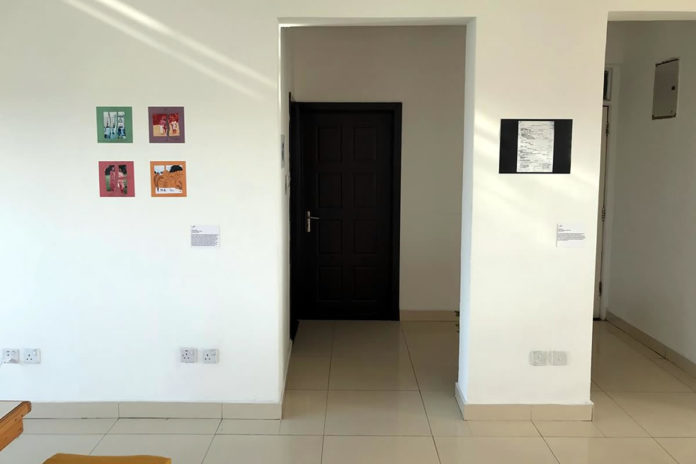The German curator Leon Hösl first encountered Nigeria outside its shores, before visiting for the first time this November.
In 2017, he met renowned artists Emeka Ogboh, Akinbode Akinbiyi, Olu Oguibe, and Otobong Nkanga at the fourteenth edition of Documenta, in Kassel, Germany and in Athens, Greece. All four are Nigerians and, at the time, Hösl was a curatorial assistant supervising some of their projects. The themes engaged by their projects spanned identity, traditional crafting and production dynamics, as well as migration.
Meanwhile, Hösl had met the mixed media artist Emeka Udemba, who lives and works in Freiburg—Leon’s hometown—and received some insight into engaging contemporary African art.
His encounters with these artists and their works, said Hösl, birthed a curiosity: What is their home country like? He decided he would like to visit and the opportunity to do so arrived a year later.
During his stay in Lagos, Hösl was hosted by the Goethe Institut Nigeria’s residency program and afforded the opportunity to encounter Nigerian art and culture—as he had arrived at the start of the art and cultural festivities in the city. Even so, his first discovery was the city’s famed traffic.
“Horrible Traffic!” he wrote in one of our text exchanges. He was on his way to Freedom Park for a Lagos Book and Art Festival event. “First Taxify just canceled the trip. Next one needs 12 minutes to pick me up. Now we are moving like a snail”
It didn’t take him long to learn that the trick to moving around the city a bit faster is good timing, Kekes, and Okadas. He was at the Lagos Photo Festival, Art Summit Nigeria, ArtX Lagos, and visited the Revolving Art Incubator all located in Victoria Island. He also went to Badagry Heritage Museum, Vernacular Art-space Laboratory Foundation in Iwaya, and a couple of other places, mostly paying visits to artists in their studios. He presented his work for Documenta 14 at the Centre for Contemporary Art Lagos.
Asked what he thought of Ayo Akinwande’s solo multi-media exhibition “Power Show II: The God-Fathers Are Not To Blame”, featuring a three-story tall iron casting stuffed with raw wood, a somewhat omnipresent human effigy, Hösl said of the artist “He is a very energetic and politically minded person”
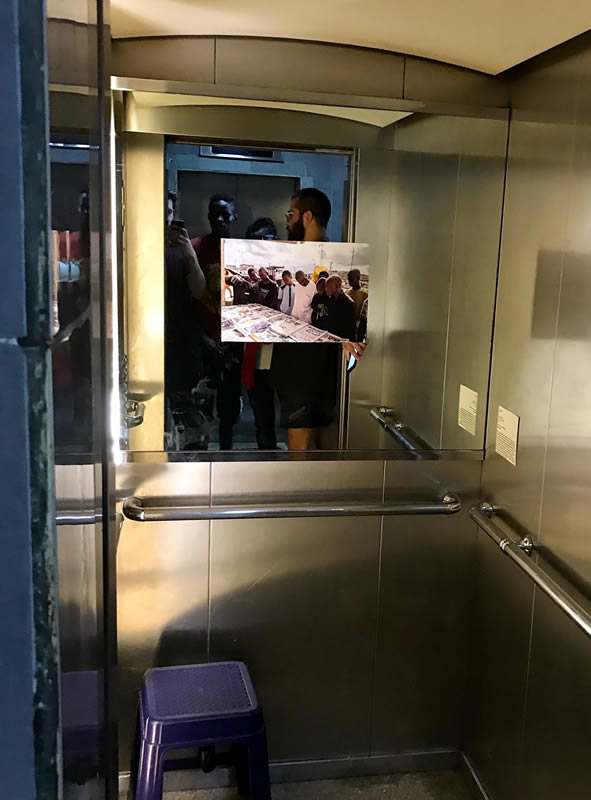
He thought Abraham Oghobase’s “Layers of Time and Place: What Lies Beneath” and “What if Austria Had Colonized Nigeria”, which both exhibited at the Art21 Gallery in Victoria Island, showcased an interesting and atypical “juxtaposition of real and speculative historical narratives of an African society”. Ndidi Dike’s photos and installations at the Lagos Photo Festival were “intriguing, emotional and questioning”.
Hösl enjoyed the insights into customs and traditions around womanhood in the Igbo society courtesy of Ngozi Schommer’s “Ìgwè bụ ényí” which exhibited alongside Natalia Orendain’s “6˚ 26′ 22″ N /3˚ 21′ 30″ E”, an exploration of the choreography of trading around the Lagos port. Both showed at the Omenka Gallery in Ikoyi.
“In fact,” he said, “every piece of art reveals something interesting about the space and condition it is created in.”
At the Art Laboratory and Experimental School in Iwaya/Makoko Community, an initiative of the photographer and visual artist Aderemi Adegbite, something caught Hösl’s attention: The dedication in both young and old to create a difference in their community as artists paved their own roads, constructed and painted their own structures.
“One could sense that communal spirit,” said Hösl, cutting a shape in the air with both palms. “I’m curious to see how this project will continue.”
The school is at the shoreline of the Lagos lagoon and was completed to accommodate a studio, exhibition space and workshop for collaborative projects aiming to engage with the community.
In Badagry, 56km outside Lagos city, Hösl visited the slave museums and “sensed a similar engagement into communal work and alternative artistic education” when meeting the artist Charles Okereke in his studio. The studio—which the artist built out of clay bricks, also serves as a hub for workshops in the local community.
The sound tapestry in Badagry differs to the one in Balogun market, a commercial hub in the heart of Lagos Island where Hösl found and bought jerseys of the Super Eagles Nigerian National football team.
“This was rated the most beautiful at the last World Cup, you know?” I said.
Hösl knew. It was the reason he bought half a dozen for himself and friends back home in Vienna.
Each place he visited, though with the general sounds of human activities on the background, had a peculiar sound. “Acoustical codes; the sounds are at once exhaustive and complicated,” he wrote in the introductory text for his one-day project “A Tailor’s Scissors” at 16/16, an art space in Victoria Island, where he also stayed during the residency.
Hösl’s first impression of Lagos, before knowing much about the city, were descriptions of the city’s sound by Emeka Ogboh, and this continued to shape his intuition of urban life. He found himself at the New Afrika Shrine for a bit of the Afrobeat sound. His experience at the Shrine would feed into his project, as he contemplated the place of sound as a tool for communication and a guide to people’s perception of their environment.
All of these took considerable work, but, by encountering Lagos, the German curator has taken a relatively large first step.
First published on Goethe-Institut www.goethe.de
